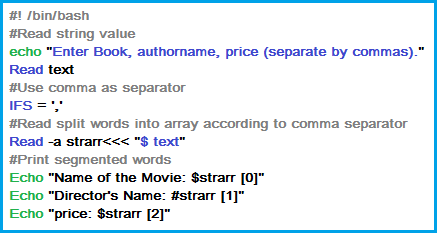运维人员/系统管理员每天要在终端敲入大量命令,也要修改查看大量文本配置文件,日志信息。
甚至可以夸张一点说Linux/Unix system admin的全部工作就是和字符串打交道。
binary#
大家都知道文本文件是字符串组成的,其实二进制文件里面其实也包含了很多字符串:
1
2
3
4
5
6
7
8
9
10
11
12
13
14
| ➜ infra-api git:(dev) file infra-api
infra-api: Mach-O 64-bit executable x86_64
➜ infra-api git:(dev) strings infra-api | head
flag
hash
mime
path
sort
sync
time
*int
AAAA
Addr
➜ infra-api git:(dev)
|
收集一些常用的shell 字符串操作命令
cut#
1
2
3
4
5
6
7
8
9
10
11
12
13
14
15
16
| ❯ tldr cut
Cut out fields from stdin or files.
More information: https://www.gnu.org/software/coreutils/cut.
- Cut out the first sixteen characters of each line of stdin:
cut -c 1-16
- Cut out the first sixteen characters of each line of the given files:
cut -c 1-16 file
- Cut out everything from the 3rd character to the end of each line:
cut -c 3-
- Cut out the fifth field of each line, using a colon as a field delimiter (default delimiter is tab):
cut -d':' -f5
- Cut out the 2nd and 10th fields of each line, using a semicolon as a delimiter:
cut -d';' -f2,10
- Cut out the fields 3 through to the end of each line, using a space as a delimiter:
cut -d' ' -f3-
|
cat/less#
cat,主要有三大使用场景:
一次显示整个文件 cat filename;
从标准输入流(键盘)新建一个文件。cat > filename;
将几个文件合并为一个文件: cat file1 file2 > file。
参数:
-n 或 –number 由 1 开始对所有输出的行数编号
-b 或 –number-nonblank 和 -n 相似,只不过对于空白行不编号
-s 或 –squeeze-blank 当遇到有连续两行以上的空白行,就代换为一行的空白行
-v 或 –show-nonprinting
例:
- 把 textfile1 的档案内容加上行号后输入 textfile2 这个档案里
1
| cat -n textfile1 > textfile2
|
- 把 textfile1 和 textfile2 的档案内容加上行号(空白行不加)之后将内容附加到 textfile3 里。
1
| cat -b textfile1 textfile2 >> textfile3
|
- 清空test.txt
1
| cat /dev/null > /etc/test.txt
|
另外,本文读取文件的操作可用less命令替代,less命令速度会更快些
awk#
awk可以算独立的一门编程语言,举两个例子:
- 截取路由器MAC地址后四位
1
2
3
4
| $(cat /sys/class/ieee80211/${dev}/macaddress) | awk -F ":" '{ print $5""$6 }' | tr a-z A-Z
echo sd:3s:xf:0h:w4:n8 | awk -F ":" '{ print $5""$6 }' | tr a-z A-Z
W4N8
|
- 对某一列求和
1
| awk -F',' '{sum+=$2;} END{print sum;}' file.txt
|
运行方式#
- 命令行方式
1
| awk [-F field-separator] 'commands' input-file(s)
|
其中,commands 是awk命令,[-F域分隔符]是可选的。 input-file(s) 是待处理的文件。
在awk中,文件的每一行中,由域分隔符分开的每一项称为一个域。通常,在不指名-F域分隔符的情况下,默认的域分隔符是空格。
脚本方式
将所有的awk指令写入一个文件,并使awk程序可执行,然后把awk解释器作为脚本的首行,即可运行awk脚本。
把脚本首行(magic bang):#!/bin/sh 换成: #!/bin/awk 即可,以 which awk 的输出为准。
将所有的awk命令插入一个单独文件,然后调用:
1
| awk -f awk-script-file input-file(s)
|
其中,-f选项加载awk-script-file中的awk脚本,input-file(s)跟上面的是一样的。
tr 命令从标准输入删除或替换字符,并将结果写入标准输出。根据由 String1 和 String2 变量指定的字符串以及指定的标志,tr 命令可执行三种操作。
本文使用了简单的替换操作。小写字母转为大写字母。
